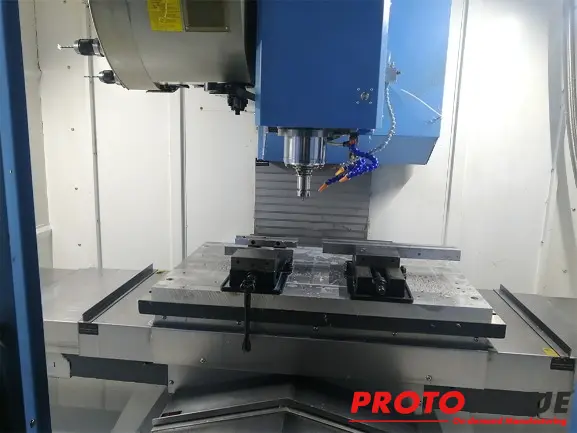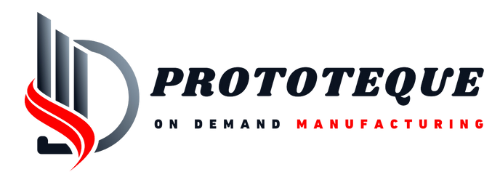CNC Milling Service
Expert CNC milling services from a leading China manufacturer. High-quality custom parts, rapid prototyping, and competitive pricing.
Precision CNC Milling Services | China Manufacturing Experts
Prototeque is your go-to partner for top-tier CNC milling services in China. With a decade of expertise in metal machining, we deliver precision-engineered components that meet the highest industry standards.
Our state-of-the-art milling shop houses advanced 3-axis, 4-axis, and 5-axis CNC milling machines, enabling us to handle intricate designs with unmatched accuracy. From complex prototypes to high-volume production runs, our versatile capabilities ensure we can meet your exact specifications.
Whether you require plastic CNC milling or metal machining, our skilled technicians produce high-quality CNC milling components tailored to your needs. Experience the Prototeque difference – exceptional craftsmanship, competitive pricing, and reliable delivery.
Our CNC Milling Capabilities
Prototeque boasts a comprehensive range of CNC milling capabilities, equipped with state-of-the-art machinery to deliver precision and efficiency. Our equipment includes:

T-700 CNC Milling Machine – Precision Aluminum Machining
- X/Y/Z axis travel: 700/400/320 mm
- Workable table size: 800 x 400 mm
- Spindle speed: 24000 RPM
- Number of tools: 26
- Material specialization: Aluminum CNC Machining
T-V1055S CNC Milling Machine
Steel Machining Specialist
- X/Y/Z axis travel: 1000/550/600 mm
- Workable table size: 1100 x 500 mm
- Spindle speed: 12000 RPM
- Number of tools: 21
- Material specialization: Steel CNC Machining


T-V1685S CNC Milling Machine
Large Steel Part Specialist
- X/Y/Z axis travel: 1650/850/850mm
- Workable table size: 1700 x 850 mm
- Spindle speed: 12000 RPM
- Number of tools: 21
- Material specialization: Large Steel Part CNC Machining
5-Axis CNC Milling Machine
Complex Part Mastery
- X/Y/Z axis travel: 450/680/400mm
- A/C axis travel: -120° to 90°/360°
- Workable table size: D400mm
- Spindle speed: 20000 RPM
- Number of tools: 37
- Material specialization: Complex Part CNC Machining

Common CNC Milling Materials
With years of experience in CNC milling, we’ve mastered the art of machining a wide range of materials to exacting tolerances. Our deep understanding of material properties allows us to optimize cutting parameters, preventing deformation, and achieving superior surface finishes and dimensional accuracy.
Whether it’s a single-step process or requiring precise coarse and fine machining, we excel at handling materials such as :
Your questions answered
Common questions
What CNC Milling
CNC milling is a manufacturing process that utilizes a computer-controlled machine to remove material from a workpiece, shaping it into the desired form. Primarily used for machining sheet materials like PCBs, wood, metal, and plastic, CNC milling offers exceptional precision and versatility.
While it’s possible to machine bar materials using CNC milling, it’s generally more efficient and produces superior surface finishes with CNC turning. Due to these factors, machining bar materials is typically not the primary application for CNC milling.
CNC Milling VS Turning
Understanding the Basics
CNC Milling and CNC Turning are two primary methods in computer numerical control (CNC) machining. While both processes involve removing material to create a desired shape, they differ significantly in how they achieve this.
CNC Milling
- Workpiece: Remains stationary.
- Cutting tool: Rotates and moves along various axes to remove material.
- Best for: Creating complex shapes, intricate details, and parts with flat surfaces.
CNC Turning
- Workpiece: Rotates on a lathe.
- Cutting tool: Remains stationary and removes material as the workpiece spins.
- Best for: Creating cylindrical shapes, shafts, and parts with rotational symmetry.
Key Differences
Feature | CNC Milling | CNC Turning |
Workpiece movement | Stationary | Rotates |
Tool movement | Rotates and moves | Stationary |
Part shape | Complex, various shapes | Cylindrical, rotational |
Material removal | Intermittent | Continuous |
When to Choose Which
- Choose CNC Milling when you need to create intricate details, complex shapes, or parts with flat surfaces.
- Choose CNC Turning when you need to produce cylindrical parts, shafts, or components with rotational symmetry.
What is the difference between 3-axis and 5-axis mill?
Understanding the Axes
Before diving into the differences, let’s clarify the axes:
- X-axis: Horizontal movement left and right.
- Y-axis: Horizontal movement forward and backward.
- Z-axis: Vertical movement up and down.
- A-axis: Rotational movement around the X-axis.
- B-axis: Rotational movement around the Y-axis.
3-Axis Milling
A 3-axis milling machine can move the cutting tool in three directions: X, Y, and Z. This means the tool can move horizontally, vertically, and in depth. While capable of creating many parts, it’s limited in its ability to reach complex angles and contours without multiple setups or workholding changes.
5-Axis Milling
A 5-axis milling machine adds two rotational axes (A and B) to the three linear axes. This allows the cutting tool to tilt and rotate while cutting, enabling the creation of complex shapes and geometries in a single setup. This increased flexibility leads to:
- Improved efficiency: Less setup time and reduced material waste.
- Enhanced accuracy: Consistent part quality with fewer errors.
- Greater complexity: Ability to create parts with intricate features and undercuts.
Investment Costs
Initial Investment: 5-axis machines are significantly more expensive to purchase compared to 3-axis machines.
Production Time: Due to the ability to machine complex parts in a single setup, 5-axis machines can often reduce overall production time compared to multiple setups required for 3-axis machines. However, individual machining cycles can be longer due to the machine’s complexity.
Part Turnaround: For simple parts, 3-axis machines often offer faster turnaround times due to simpler programming and setup. 5-axis machines excel in reducing turnaround times for complex parts.
What tolerances can your CNC milling machines achieve?
| Metals with Drawing | Plastics with Drawing | No Drawing | |
| Linear Dimension | +/- 0.01 mm | +/- 0.05 mm | ISO 2768 Medium |
| +/-0.0003 inch | +/- 0.002 inch | ||
| Hole Diameters | +/- 0.01 mm | +/- 0.05 mm | ISO 2768 Medium |
| +/-0.0003 inch | +/- 0.002 inch | ||
| Shaft Diameters | +/- 0.004 mm | +/- 0.05 mm | ISO 2768 Medium |
| +/-0.00016 inch | +/- 0.002 inch |
